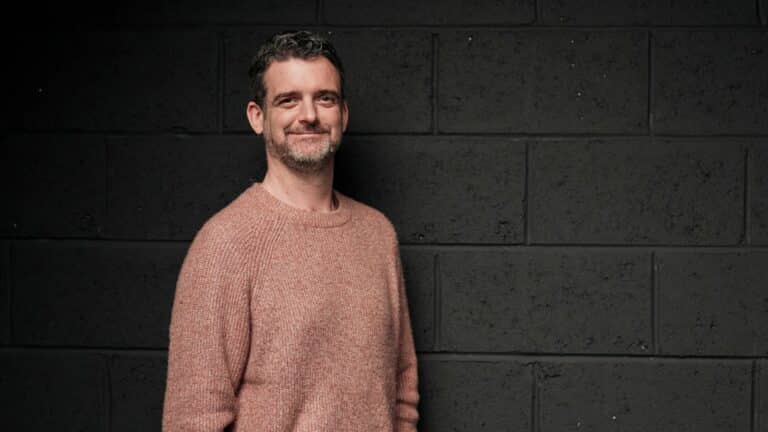Involved in the CGI industry for almost 20 years, Dean Punchard is now Head of CGI at Leeds-based agency HUB. His career featured a lengthy role as a freelance CGI artist where he honed his craft, business sense and client relationships. Here, he explores the future of CGI in advertising.
The problem
Those who have worked in the CGI industry, or commissioned CGI and 3D work, will know that the process of creating killer work can vary from painstakingly slow, to quite fast and convenient. While it’s merely an annoyance for artists, this variability can be a big deterrent for clients hoping to integrate CGI into their next campaign.
One of the tightest bottlenecks when creating CGI content isn’t the creativity or the strategy. It’s the rendering of the actual assets themselves. Rendering is where the 3D meshes, and lights and textures are accurately computed and turned into the beautiful final product. So how can artists remove this barrier to creative freedom and pave the way for a CGI-fuelled future in advertising?
The solution
Single images at high resolution can take hours to render, and animations can take days. Currently, artists can work around this by investing in hardware or using an external render farm. Both of these options are expensive, which is another deterrent for clients.
One solution is to take advantage of real-time rendering.
But what is real-time rendering?
Real-time rendering has the potential to revolutionise the way businesses and studios render their images, whilst also giving artists greater creative freedom.
In a nutshell, it’s an advancing technology that allows artists and clients to see their image or animation in real-time. Traditional rendering can take hours. Real-time rendering is much, much faster.
Real-time rendering is now possible due to continuous advances in hardware, and software. Hardware, mainly high-end PC graphics cards are more readily available than in previous years. Remember the chip shortage from a year or so ago?
Software advancements are particularly important when considering how prevalent real-time rendering is set to become over the next few years. Software is becoming increasingly user-friendly and takes full advantage of the latest powerful graphics cards. My real-time software of choice, Chaos Vantage, works alongside my traditional software packages, so the transition to real-time rendering is becoming seamless.
What does this mean for client projects?
1) Efficiency
Using real-time rendering is faster than traditional rendering, and the quality can be just as high. Drafts and previews can be almost instantaneous, making client feedback and amends a much simpler process. This means projects can be delivered faster, bigger, and better.
2) Reactivity
Historically, CGI content hasn’t been fast enough to react to current events in the same way that a YouTube content creator or traditional illustrator has, and I’ve found this frustrating at times. However, with the bottleneck of render times gone, I’m sure we’ll see more creators using CGI to compete for attention on a more frequent basis.
In future, being able to react to market demands, trends and concepts will be a big part of a CGI artist’s role. Maybe we’ll create more disposable content for Instagram Reels or repurpose an archived project to stand out from the crowd, without blowing the budget.
Take the Pantone ‘Colour of the Year’. With CGI, artists could turn a past CGI image into a Peach Fuzz marketing piece, whilst delivering a fun, meaningful and attention-grabbing piece in a cost-effective way.
3) Creativity
In the past, lighting a scene or product could be very frustrating, time consuming, and a creativity killer, which isn’t great when all you want to do is create amazing work for your clients!
Using the speed of real-time rendering, I have been able to unleash more creativity. Real-time rendering allows artists to quickly test and play with ideas, refine shots quickly and iterate at a great speed.
Reality check
It all sounds great, doesn’t it? And it will be. But right now, there are a few drawbacks. The current software for real-time rendering comes without the bells and whistles that traditional rendering software does, such as advanced post-production effects, complex materials, and accurate hair and fur.
This means that, unfortunately, not all projects will be suitable for real-time rendering. However, I’m sure the software developers won’t take long to catch up! For us at HUB, we see this as an ongoing opportunity to enhance CGI work for our clients’ by leveraging new technology.
Final thoughts
Using real-time rendering is a no-brainer for a large number of projects, whether it’s used for previews and drafts, idea development, final production, or a mix of all three. Instant feedback is the dream for 3D artists, and clients will see huge advantages too with the elimination of the time-killer that is traditional rendering. Clients can expect quicker project turnaround times, fast iterations and feedback, better budget spends, and a happier team of 3D artists too!
There is a trade off with hardware setup costs and software features, but these will become insignificant with time, and it’s a trade-off I’m happy to make for speed, responsiveness, and creativity.
Right now, if you’re working in 3D and CGI or looking to commission CGI work, then you should be seriously considering real-time rendering for its speed and freedom. Not all projects will be suitable for real-time rendering, but a surprising amount will – especially as the tech develops. I’m also looking forward to big advances in virtual reality, virtual production, and other CGI mediums as the technology continues to take big steps forward – but that’s a discussion for another day.











